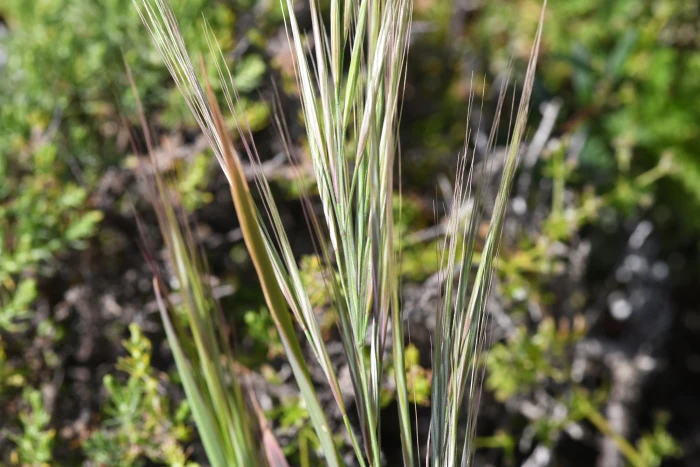Maritime Brome
(Bromus maritimus)
Maritime Brome (Bromus maritimus)
/
/

© Chloe and Trevor Van Loon
CC BY 4.0
Image By:
© Chloe and Trevor Van Loon
Recorded By:
Copyright:
CC BY 4.0
Copyright Notice:
Photo by: © Chloe and Trevor Van Loon | License Type: CC BY 4.0 | License URL: http://creativecommons.org/licenses/by/4.0/ | Uploader: chloe_and_trevor | Publisher: iNaturalist |













Estimated Native Range
Climate Requirements for World Golf Village, Florida
| This Plant | Your Site | Plant Suitability for Your Location | ||
|---|---|---|---|---|
| • Precipitation | 9" - 100" | 50" | Aquatic | Aquatic |
| • High Temp. | 66°F - 93°F | 91°F | Your summer temperatures are normal for this plant. | Excellent |
| • Low Temp. | 9°F - 52°F | 44°F | Your winter temperatures are normal for this plant | Excellent |
This plant may not grow well at your location - your precipitation is too high.
Summary
Bromus maritimus, commonly known as maritime brome or seaside brome, is a perennial grass native to coastal dunes, bluffs, and other sandy habitats along the Pacific coast of California and Oregon. It is well-adapted to saline conditions and is often found in coastal prairies and the upper edges of salt marshes. Maritime brome typically grows to a height of 1-3 feet (0.3-0.9 meters) and has a clumping growth habit. It produces slender, nodding flower spikes in late spring to early summer, with the flowers being less showy and more functional, adapted to wind pollination. The foliage is a blue-green color, contributing to its visual appeal in naturalistic plantings.
Maritime brome is valued for its ability to stabilize sandy soils and its tolerance of salt spray, making it an excellent choice for coastal restoration projects and erosion control. It is also used in wildflower meadows and naturalistic garden settings where low maintenance and drought tolerance are desired. This grass prefers full sun to light shade and is highly adaptable to various soil types, provided they are well-drained. While maritime brome is not typically plagued by serious pests or diseases, it can become invasive if conditions allow it to spread unchecked.CC BY-SA 4.0
Maritime brome is valued for its ability to stabilize sandy soils and its tolerance of salt spray, making it an excellent choice for coastal restoration projects and erosion control. It is also used in wildflower meadows and naturalistic garden settings where low maintenance and drought tolerance are desired. This grass prefers full sun to light shade and is highly adaptable to various soil types, provided they are well-drained. While maritime brome is not typically plagued by serious pests or diseases, it can become invasive if conditions allow it to spread unchecked.CC BY-SA 4.0
Plant Description
- Plant Type: Grass
- Height: 1.5-2.5 feet
- Width: 1-1.5 feet
- Growth Rate: Moderate
- Flower Color: N/A
- Flowering Season: Spring, Summer
- Leaf Retention: Deciduous
Growth Requirements
- Sun: Full Sun
- Water: Medium
- Drainage: Medium, Fast
Common Uses
Erosion Control, Low Maintenance
Natural Habitat
Native to coastal dunes, bluffs, coastal prairies, and the upper edges of salt marshes along the Pacific coast of California and Oregon
Other Names
Common Names: Seaside Brome
Scientific Names: Bromus maritimus, Bromus carinatus var. maritimus, Bromus marginatus subsp. maritimus, Bromus marginatus var. maritimus, Bromus sitchensis var. maritimus, Ceratochloa maritima
GBIF Accepted Name: Bromus maritimus